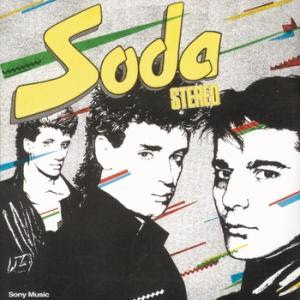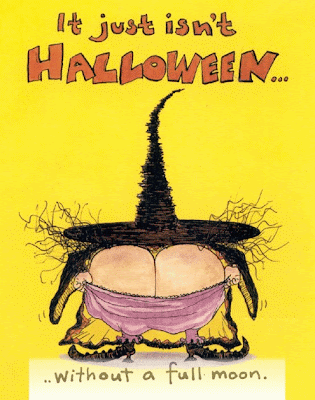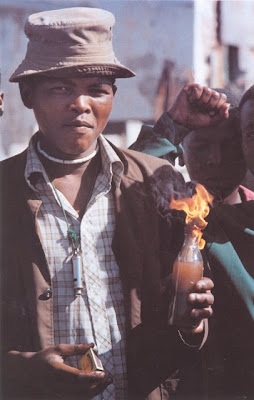
Why has "Rock en Español" culture in the U.S. virtually disappeared?
Camilo Lara: I guess it never grew because there weren't enough local bands. Most of the interesting bands were coming from Argentina, Spain or México. Since there was not a big live scene, there weren't many radio or TV shows covering it. It's hard to sell something without a large media presence.
Elena Rodrigo: For some, the genre never blew up. For others, despite being a genre that didn't get mainstream radio or TV play, "Rock en Español" achieved a lot on its own. Consider all the sold out tours and that it was recognized as a Latin genre by music stores and the media. In some cases, bands were able to reach gold or platinum status in record sales, so one could argue it was a success. But if the industry and general public expected to have the success of pop or Mexican regional music in this country without having invested the same amount of money and without having put in any work, then in their eyes, it is a failure.
Ed Morales: The tastes of U.S. Latinos are different from the tastes of youth in Latin America. Rock was becoming a passé style of music in the U.S. when "Rock en Español" began to catch on in the mid-'90s. Many young people had already embraced either hip hop – which was the emerging dominant popular music – or they clung to tropical or Mexican regional music because they identified with their home country's culture.
Also, rock has a different history for Latinos who live in different parts of the country. In California, the West, and to some extent, the Midwest, rock was more accepted as a "rebel music" for Latino youth, and many Latinos of older generations participated in its development. On the East Coast and in South Florida, rock was part of Anglo culture, and being involved in rock represented "selling out" your Latino identity. There was little participation of Latinos in the development of rock music in cities like New York and Miami. Instead, salsa and other tropical music represented cultures of rebellion, and in New York, Latinos played a significant role in the creation of hip hop.
Jorge Leal: I would argue that the rise of Spanglish media outlets such as mun2, MTV Tres, LATV, and SíTV was directly tied to the rise of popularity and visibility of "Rock en Español."
“Rock en Español” empowered a generation of young Latinos by offering them fresh artistic offerings in the language of their parents. For the first time, hearing a song in Spanish was "cool" and "hip." So was learning about the latest happenings in cities throughout Latin America. The music was no longer the nostalgic and rural fare from their parents and grandparents. However, it didn't result in phenomenal record sales, nor skyrocketing radio ratings.
Enrique Lavin: It was only a niche within a Latin cultural movement, and there wasn't one group from the U.S. Latin rock scene that was able to transcend language with its sound. If Aterciopelados or Manu Chao or Café Tacvba were born in the U.S., then there may have been more of a national interest in the scene.
Juan Data: It's true, "Rock en Español" in the U.S. has disappeared and the reason is pretty obvious: reggaetón has completely taken over Latin music. It's not that reggaetón is stealing fans from rock. I just think "Rock en Español" stagnated due to its inability to generate new fans. In my work as a DJ, I've observed that the majority of Latino immigrants are interested in "Rock en Español" purely for its nostalgic value. They want to hear songs they remember listening to during their youth – that's why the Soda Stereo tour was successful last year – but they aren't interested in listening to new music by those artists or any others who have taken their place.
It's understandable that record companies stopped trying to sell them "Rock en Español" and instead focused on reggaetón, a genre that is much easier to market. Reggaetón offers young Latinos music they can identify with and consider their own because it's not a Spanish-language "copy" of English-language music (Rock en Español, rap en Español, reggae en Español). It also appropriates the style and swagger of hip hop, giving it street credibility (vital for the "macho" ego of Latino adolescents) that "Rock en Español" could never offer.
Why did the U.S. "Rock en Español" scene that produced bands like Pastilla, Volumen Cero, Maria Fatal lose steam?
Tomas Cookman: With all due respect to the artists that are mentioned, I never did see them as the bands that would help lead a charge. There were other acts that did more and went further and opened doors for others.
Lavin: These U.S.-based bands spoke to a specific audience (bi-cultural, suburban, middle-class Latinos) with a pop-rock sound at a time when Nirvana, Pearl Jam, Beck, the Red Hot Chili Peppers and the Beastie Boys ruled alternative rock. These bands didn't bring anything new to the national rock story except a foreign language.
Morales: As much as I liked bands like Pastilla, Volumen Cero and Maria Fatal, I think the bands that developed in the U.S. didn't have as much quality and grassroots support as bands from Latin America. When bands like Caifanes, Fabulosos Cadillacs, Tacvba and Aterciopelados toured the U.S., I saw tremendous enthusiasm. I also saw them play in Latin America and there was even more enthusiasm. These bands represented the passion of Latin American kids who, for the most part, have a more difficult life than kids in the U.S. They also represent an organic part of a local Latin American culture. The U.S. bands did not represent "community" in the same way, despite their talent and passion.
More importantly, perhaps, the record companies did not do enough to promote the music. There were passionate people in the industry who wanted the bands to succeed but the bands didn't display enough sales to merit support from the higher-ups. Plus, many Latin music branches of major labels resisted the music because it disrupted the usual business of promoting vacant phony pop music. There was a conflict of aesthetics.
Lastly, the emergence of "Rock en Español" happened as just as rock began to decline in the U.S. Also, the record industry in general was collapsing. Many alternative genres, from Anglo rock to jazz and dance music, lost a lot of label and radio station support as well.
Lara: None of those bands had success in the U.S. or México. I guess that's a very powerful reason to consider why the local scene didn't take off. I think their music wasn't strong enough.
Leal: Bands signed with labels – major and indie – did not know how to promote their albums. Also, these same bands kept waiting to be promoted by the labels instead of taking a more grassroots or "guerilla" approach.
While Pastilla and María Fatal’s artistic merits are without doubt, I feel they could have been more involved in the promotion and (gasp!) the selling of their music. Every scene in the U.S. is very different; what works in L.A. may not work in Chicago, but may work in New York.
Is "Latin Alternative" the successor of "Rock En Español"? Will it ever fully cross over?
Morales: Latin alternative is a legitimate successor to "Rock en Español" because it's more inclusive of music like reggae, funk and hip hop. I'm not sure whether it will ever fully cross over, but it will continue to get support from alternative radio and on the club circuit. For a real crossover, I think bands need to include at least some component of either hip hop, reggaetón, tropical or reggae, some very exceptional lyrics and creativity, a strong pop sense, and bilingual capability.
Lavin: "Latin alternative" was a natural outgrowth from the "Rock en Español" scene – which was an alternative rock movement to begin with – that added hip hop, electronica and hipster fusions like funk and reggae into the mix. Latin alternative artists have "crossed over" as much as bands like Stereolab, Sigur Rós and Cornelius have crossed over. iTunes and similar digital music stores have leveled the playing field. You can find the music you want, if you look for it. Occasionally, there will be a Manu Chao, Aterciopelados or Café Tacvba that will break out.
Lara: Well, it's happening in México. It's a reality. There are lots of bands that sell records and pack shows. It will happen if some interesting projects are appealing enough for the audience.
Leal: "Latin alternative" and "Rock en Español" are two terms that are just… ninguno es mejor o peor que otro. “Rock en Español” was coined by an Argentinean record executive in the '80s to lump rock bands into one. “Latin alternative” was created by Tom Cookman to make Latino bands sound "cooler," but the term also lumps bands into one genre. If marketing departments need these terms, so be it.
I believe bands like Café Tacvba and Kinky have already crossed over. However, with a few exceptions, it seems that the "Latin Alternative" title is given to bands that are critical darlings but can’t bring more than 500 people to a venue to save their lives. This is going on while "over the hill" bands like Maldita Vecindad, Maná, El Tri or the recently reunited Heroes del Silencio, Soda Stereo and Fabulosos Cadillacs bring thousands of fans to their shows and actually tour the U.S. I don’t see any of these “Latin Alternative” bands becoming el relevo, the replacements, the next link for these bands.
Cookman: "Rock en Español" was just a marketing term that came out of the marketing offices of a major label last century – not exactly the center of support and understanding for the genre.
Anyway, it is OK to say that the word "Rock en Español" died – as it really did suck, but to imply that a whole genre of exciting music is not relevant nor is it a force in this country and many others is just a miscalculation on their part. All they need to do is come intern in this office for a week to see how vital it is and what a real business it is. "Rock en Español" is dead. Long live Rock en Español, ha ha ha.
Rodrigo: I hated the term "Rock en Español" from the very beginning. For me it was always Latin alternative. Mostly because a lot of bands were not really just rock.
If you're talking about crossing over to the English speaking population in this country, I think it can. When the English speakers are open to hearing great new music without needing to understand every word in a song – as the rest of the non-English speaking world does – then the crossover will naturally come, but not only for the Latin rock, but for any other Latin genre.
Gustavo Fernández: I think that there’s a gray area where Latin rock falls under the Latin umbrella when "Latin" is everything but rock. The U.S. Latin rock culture prefers English-language rock and does not support Latin rock. Nor do clubs. If you can’t have a local scene with a couple of hundred bands then it won’t take off. Anglo rock radio is too corporate (everything is, for that matter) and Latin rock falls through the cracks, big time. We could go on for hours but to develop a scene, artists need to be f**ing great on stage. And play at least 150-plus shows a year. No one does that in the U.S.
Panel
Tomas Cookman: Founder of Cookman International and The Latin Alternative Music Conference (LAMC).
Juan Data: DJ and former writer for La Banda Elastica.
Gustavo Fernández: Founder of DLN (DeLaNuca) distribution, an independent Latin music distributor in the U.S.
Camilo Lara: Vice-president of EMI, Mexico. Moonlights as the Mexican Institute of Sound.
Enrique Lavin: Weekend Arts & Entertainment Editor for the New Jersey Star-Ledger newspaper. Former writer for La Banda Elastica magazine and the editor of Ñ Alternative, the Latin alternative section of CMJ magazine.
Jorge Leal: Former Los Angeles concert promoter and writer for Al Borde Magazine and Zona de Obras in Spain. Currently a writer for "Vivo" on mun2.
Ed Morales: Author of Living in Spanglish: The Search for Latino Identity in America. His work has appeared in publications like The Village Voice, Rolling Stone and The Los Angeles Times.
Elena Rodrigo: Former label manager for Café Tacvba, Enanitos Verdes, Molotov and Juanes at Universal Latino. Currently a marketing and PR consultant.
COMENTARIO DE SERGIO ESTRADA:
The real reason for the almost extinction of “Rock en Español” and the grow in the existence of Reggaetón is that even if you don’t want to admit it or saying it publicly, the young Latin culture of the 80s and 90s was always one step back from the American culture. Therefore by the time that “Rock en Español” appeared in the Latin Culture, the American culture was already into hip hop music and at the same time Salsa music was already established in New York as the musical identity for Hispanics in USA. From the mix of those two main genres was that a new rhythm was born and call reggaetón. Actually this genre is not new, it just became popular as channels like mun2 and others started to give it more relevance. Today this rhythm is part of the Latin Culture but it will disappear as soon as the American culture get tired of the rap and hip hop and start a new genre or style in the main stream, as soon as that happen, the Latin Culture will create a new rhythm to go with the flow of the American Culture.
If you want to understand more about the young Latin culture just listen to the lyrics of the all-classic “We are sudamerican rockers” from Los Prisioneros. Ha Ha Ha, it is kind of funny the name of the band because the young Latin culture is a prisoner of the American market, and if you disagree please let me know why we have to read write about the Latin Culture in English if the main market is Hispanic and they speak Spanish. Even the TV channel is in English. What happen with our culture? I know why, it is because it is easy for the Latinos in USA to try to fit if they do not have to translate and explain to their friends what they are watching in the Latin channels. However that only applies for those Hispanics that live in USA and not to the rest of SurAmerica.
We are just slaves of the American Market. I want you to think about this topic, so here are two lines from “We are sudamerican rockers” song that can give you a hint of our ever-changing Latin identity inside of USA.
“No nos acompleja revolver los estilos
Mientras huelan a gringo y se puedan bailar”


































